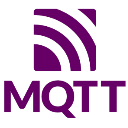MQTT clients are applications or devices that use the MQTT protocol to send and receive messages. MQTT (Message Queuing Telemetry Transport) is a lightweight protocol developed for efficient communication between devices.
In this article, you will learn what MQTT is, what functionalities MQTT clients offer and how you can use them in your projects. Discover how MQTT clients collect and process real-time data and provide valuable insights for your decision-making.

MQTT and MQTT clients
MQTT is a lightweight message protocol that was developed for communication between devices via the Internet. It is particularly suitable for devices with limited computing power or for networks with low bandwidth. An MQTT system mainly consists of a broker and several clients. The broker is a server that receives and forwards messages. Clients are the devices or applications that send (publish) or receive (subscribe) messages. MQTT clients are often used in IoT (Internet of Things) applications. For example, sensors in a smart home can send their data to a central server, which then controls other devices, such as thermostats or lighting systems.
Functionalities of a MQTT client
An MQTT client must first connect to a broker in order to send or receive messages. This connection remains active as long as the client is active, which enables continuous communication. A client can register (subscribe) to certain message topics and only receive the messages that interest it. Similarly, a client can send (publish) messages to certain topics so that other interested clients can receive them.
MQTT offers three quality levels for message transmission:
- QoS 0: The message is sent a maximum of once and no acknowledgement is expected.
- QoS 1: The message is sent at least once and an acknowledgement is expected.
- QoS 2: The message is sent exactly once and a complex confirmation process is carried out to avoid duplicates.
Implementation and use of an MQTT client
There are many MQTT client libraries and software solutions that are suitable for different programming languages and use cases. Here are some popular MQTT clients:
This list shows a selection of MQTT clients that can be used in different environments and for different use cases. The OPC Router stands out as a user-friendly middleware solution that requires no programming knowledge and is particularly suitable for industrial applications.
This might also interest you
The REST architectural model has become a leading standard for system integration. A system connection via REST is effective and simple. Due to the statelessness of REST, easy scalability is possible and thus REST is widely used in the industry. We provide you with the necessary basic knowledge about REST and REST API in our Knowledge Base.
The need for data exchange has increased with the internet and the general networking of computer systems. For web systems, platform independence is very important here. With JSON, a resource-saving, human- and machine-readable data format has established itself for this purpose. You can find practical basic knowledge about JSON and useful tips for its use here.
OPC UA enables standardised access to machines, devices and other systems in Industrie 4.0, thus ensuring manufacturer-independent data exchange. In our Knowledge Base you will find an overview of the functionality and terms of the most important communication protocol for Industrie 4.0 and the Industrial Internet of Things (IIoT).
In our Knowledge Base you will find detailed step-by-step instructions for connections with our MQTT Plug-in for the following areas: Amazon AWS IoT Cloud, Microsoft Azure IoT Hub, IBM Watson, Google IoT Core and Siemens MindSphere IoT.

